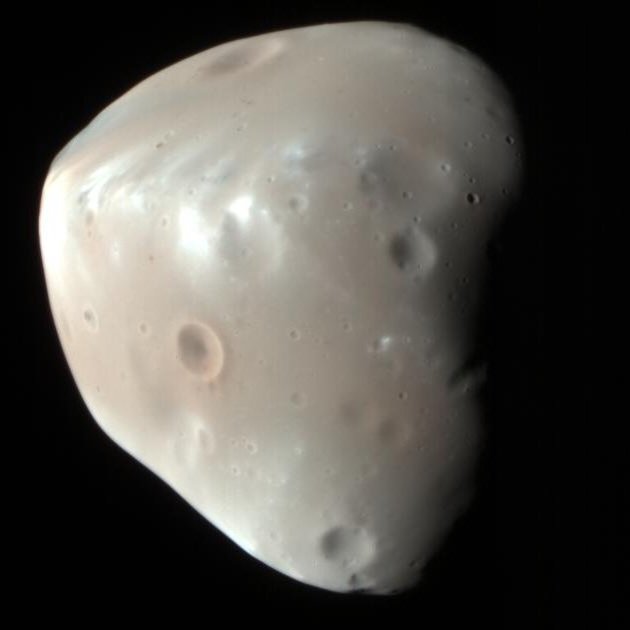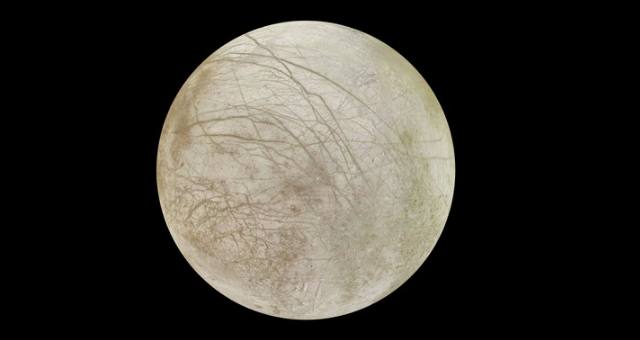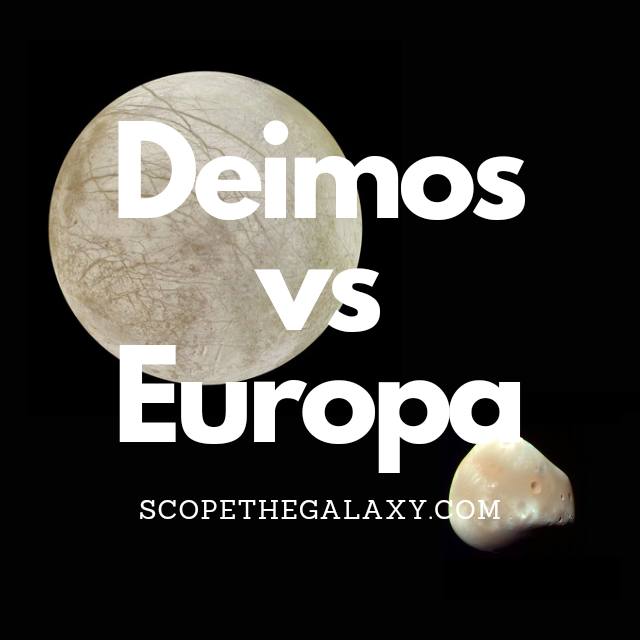*This post may contain affiliate links. This means we may make a commission if you purchase an item using one of our links*
The main differences between Deimos and Europa are that Deimos is far smaller with a diameter of 12.4km while Europa’s diameter is 3,121.6km, Europa orbits Jupiter while Deimos orbits Mars and Europa may have an icy ocean underneath its surface while Deimos does not.
There are various other differences between the two so, continue reading for a more detailed look at each body along with their similarities and differences below.
What Is The Moon Deimos?
Table of Contents

Deimos is the smaller and outermost of the two moons of Mars, named after the Greek God of dread and terror (the brother of Phobos). This satellite was also discovered by American astronomer Asaph Hall just five days before Phobos (12th August 1877).
Scientists like Johannes Kepler had put forward theories for the existence of these moons many years before they were discovered. Their calculations were based on the fact that the planets on either side (Earth and Jupiter) possessed one and four moons, respectively.
Still, none were discovered until the 19th century. One of the main reasons for this is that the tiny size of Phobos and Deimos, combined with an exceptionally close orbit to their planet, means that the glare of Mars often obscures our view of them.
Phobos measures just 15 x 12 x 11 km and completes an orbit of Mars once every 30 hours.
This tiny moon is also a heavily cratered landscape shaped by the impact of asteroid collisions over time. However, the material thrown up from these impacts doesn’t appear to have landed back on the moon’s surface as it usually would. This could be because the lack of gravity on Phobos allowed the ejected material into space.
The surface gravity on Deimos is just 0.003 m/s^2 (compared to 9.807 m/s^2 on Earth), which means the average gravitational pull of Deimos is only 0.003 m/s. With only 1/2500th of Earth’s gravity, you would need a tether to walk on this rocky moon, or every step would put you at risk of achieving escape velocity and launching yourself into space.
The composition of Deimos is similar to Phobos, suggesting that it might also be a captured asteroid. Its surface is very dark gray and has an albedo of around 0.07, meaning it reflects just 7% light (about half of the light Earth’s moon can reflect).
What Is The Moon Europa?

Europa is the smallest of the Galilean moons, first discovered on 8th January 1610. The surface of this icy world is frozen, but scientists believe a watery ocean could lie beneath the surface. And in 2012, researchers found a possible water plume in the Southern polar region of Europa.
This research is yet to be confirmed; still, it gives us reasonable grounds to hypothesize that water could exist on this icy moon.
Estimates place Europa at around 4.5 billion years old (the same age as its planet, Jupiter), and its average distance from the Sun is approximately 780 million km.
It has a diameter of 3,121.6km, which makes it larger than Pluto but smaller than the Earth’s moon, and the maximum temperature is a chilly -160 degrees Celsius. In regards to mass, it measures in around 4.8 × 10^22 kg.
Europa takes three-and-a-half days to orbit its planet at an average distance of 670,900km, and it is tidally locked, meaning the same side of the moon always faces Jupiter.
Among the fascinating features of this ice moon is its incredibly reflective nature. The icy crust of this body provides a light reflectivity of 0.64 – the highest of any moon in the solar system.
Data from the Galileo spacecraft suggests that Europa is composed of an iron core, rocky mantle, and silicate rock (a similar composition to Earth).
The moon’s surface is covered in cracks, which many theorize could result from tidal currents beneath the surface. It is this potential of water – and of life – that keeps astronomers so interested in this moon.
Europa might be small, but astronomers estimate it holds two to three times more water than the Earth. In addition, this moon possesses the essential elements for life, such as carbon, oxygen, hydrogen, and nitrogen.
There may be no solar energy on this moon, but hydrothermal vents could provide energy, and tidal heating from Jupiter could provide a heat source and keep the moon stable enough for life to form. In addition, the liquid ocean is well protected from radiation from thick, icy surfaces.
Similarities Between Deimos And Europa
As both are natural satellites, Deimos and Europa do share a few similarities, which includes the following:
- Both have a rocky, terrestrial surface.
- Neither have rings surrounding them.
- Both are tidally locked to their planet.
- Both orbit their planet in an elliptical pattern.
- Neither have tectonic plates.
- Neither have a magnetic field.
- Europa and Deimos have a practically non-existent axial tilt.
Differences Between Deimos And Europa
As for the differences between the two, they include the below.
- Deimos orbits Mars whilst Europa orbits Jupiter.
- Europa is a spherical shape while Deimos is not.
- Europa has a diameter of 3,121.6km whilst Deimos has a diameter of 12.4km.
- Deimos has no atmosphere whilst Europa has a very thin atmosphere composed of oxygen.
- A day on Deimos takes 30 hours whilst an Europa day is 3.5 days.
- It takes Deimos 30 hours to orbit Mars and around the Sun in 687 days whilst Europa orbits Jupiter in 3.5 days and the Sun in 12 years.
- Deimos’ temperature ranges between -4 to -112 degrees Celsius whilst Europa’s is around -160 degrees Celsius.
- Europa’s density is 3.01 g/cm³ whilst Deimos density is 1.47 g/cm³.
- Europa’s mass is 4.8 × 10^22 kg whilst Deimos’ mass is 1.4762 × 10^15 kg.
- Deimos’ gravitational strength is 0.003 m/s² whilst Europa’s is 1.428 m/s².
- Europa orbits Jupiter at an average distance of 442,200km whilst Deimos is 24,680km away from Mars.
- Europa has a central core while Deimos does not.
- Europa is amongst the brightest moons in our solar system while Deimos is not.
Summary
Both Europa and Deimos share a few features such as their terrestrial composition, neither have tectonic activity and are tidally locked to their respective planets but, they are still very different from one another.
Whether it be in regards to mass, size, density, the length of their days, temperatures and more, Europa and Deimos are distinct enough in their own rights to be looked as independent entities as opposed to just another moon orbiting a planet.

